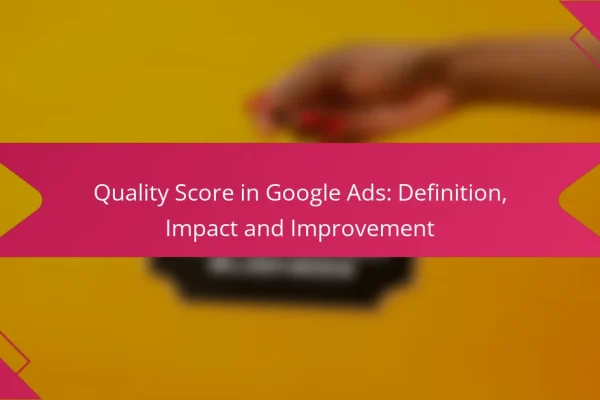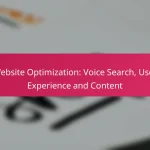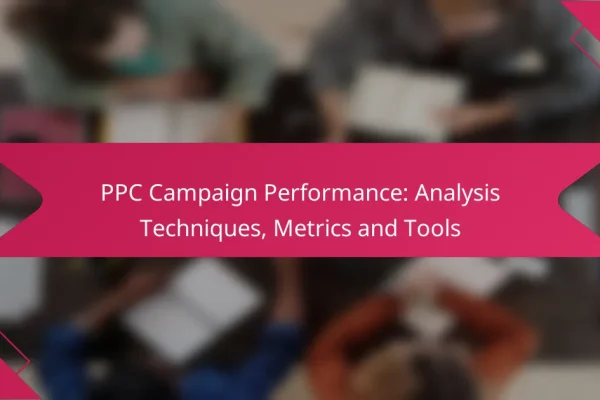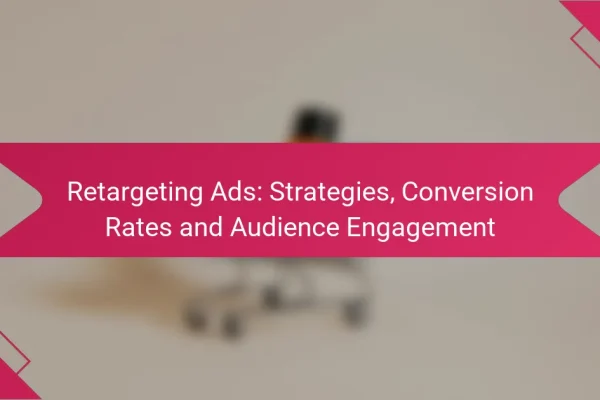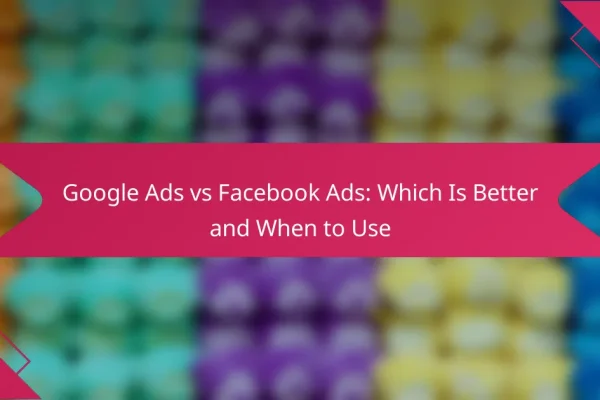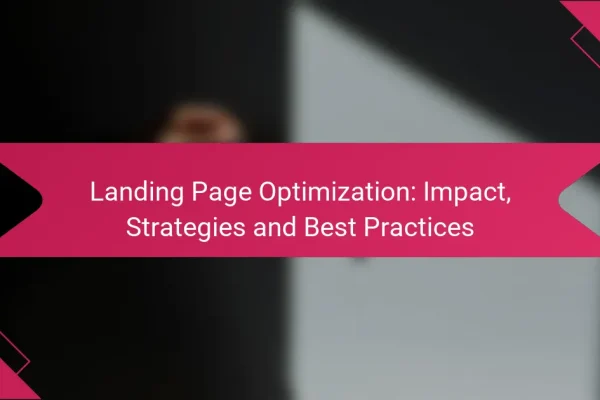How does PPC advertising generate immediate results in Canada?
PPC advertising generates immediate results in Canada by allowing businesses to display ads prominently on search engines and social media platforms as soon as campaigns are launched. This approach targets specific audiences, ensuring that ads reach potential customers quickly and effectively.
Targeted audience reach
PPC advertising enables precise targeting based on demographics, interests, and online behavior. In Canada, businesses can tailor their campaigns to reach specific regions, age groups, or even professions, maximizing the chances of engaging potential customers. This targeted approach often leads to higher conversion rates compared to traditional advertising methods.
Utilizing tools like Google Ads, advertisers can set parameters for their audience, ensuring that their ads are shown to users who are most likely to be interested in their products or services. This level of targeting helps in optimizing ad spend and improving overall campaign effectiveness.
Instant visibility on search engines
With PPC, ads can appear at the top of search engine results pages almost immediately after the campaign is activated. This instant visibility is crucial for businesses looking to capture attention quickly, especially during peak shopping seasons or product launches. In Canada, this can be particularly beneficial for local businesses aiming to attract nearby customers.
For example, a Canadian retailer launching a new product can use PPC to ensure their ad appears when potential buyers search for related keywords, driving traffic to their website without the lengthy wait associated with organic search rankings.
Measurable ROI
PPC advertising provides clear metrics that allow businesses to measure their return on investment (ROI) effectively. Advertisers can track clicks, conversions, and overall spending, making it easier to assess the success of their campaigns. In Canada, this data-driven approach helps businesses make informed decisions about their marketing strategies.
By analyzing performance metrics, such as cost per click (CPC) and conversion rates, businesses can adjust their campaigns in real-time to improve results. Regularly reviewing these metrics ensures that advertising budgets are allocated efficiently, maximizing the impact of each dollar spent.
What are the best PPC platforms for Canadian businesses?
The best PPC platforms for Canadian businesses include Google Ads, Bing Ads, and Facebook Ads. Each platform offers unique features and targeting options that can help businesses reach their audience effectively and achieve immediate results.
Google Ads
Google Ads is the most widely used PPC platform, allowing businesses to display ads on Google’s search results and across its extensive network. It operates on a bidding system where advertisers pay for clicks on their ads, making it crucial to choose relevant keywords and optimize ad copy for better performance.
Canadian businesses should consider using localized keywords to target specific regions, as this can improve ad relevance and click-through rates. Additionally, utilizing ad extensions can enhance visibility by providing extra information like location, phone numbers, or additional links.
Bing Ads
Bing Ads, now known as Microsoft Advertising, is another effective PPC platform that can be particularly beneficial for Canadian businesses. Although it has a smaller market share compared to Google, it often has lower competition and costs, which can lead to a higher return on investment.
When using Bing Ads, businesses should take advantage of its demographic targeting options, which allow for precise audience segmentation. This can help in reaching specific customer groups that may be more likely to convert, especially in niche markets.
Facebook Ads
Facebook Ads offers a robust platform for targeting specific demographics based on user interests, behaviors, and location. This makes it an excellent choice for Canadian businesses looking to engage with their audience on a more personal level through visually appealing ads.
To maximize effectiveness, businesses should create compelling ad visuals and clear calls to action. Additionally, utilizing Facebook’s retargeting options can help re-engage users who have previously interacted with the brand, increasing the likelihood of conversions.
What are effective PPC strategies for quick conversions?
Effective PPC strategies for quick conversions focus on optimizing keywords, testing ad copy, and enhancing landing pages. By implementing these strategies, advertisers can significantly improve their chances of attracting and converting potential customers swiftly.
Keyword optimization
Keyword optimization involves selecting and refining the right keywords to target in your PPC campaigns. Start by researching high-intent keywords that align with your products or services, focusing on terms that potential customers are likely to use when searching for solutions.
Consider using tools like Google Keyword Planner to identify relevant keywords with a good balance of search volume and competition. Long-tail keywords can also be effective, as they often have lower competition and higher conversion rates.
Ad copy testing
Ad copy testing is crucial for determining which messages resonate best with your audience. Create multiple variations of your ad copy, focusing on different headlines, descriptions, and calls to action. This allows you to identify which combinations drive the most clicks and conversions.
Utilize A/B testing to compare the performance of different ad copies. Monitor metrics such as click-through rates (CTR) and conversion rates to make data-driven decisions about which ads to prioritize.
Landing page optimization
Landing page optimization ensures that visitors have a seamless experience once they click on your ads. Design landing pages that are relevant to the ad content, with clear messaging and a straightforward call to action. This alignment helps reduce bounce rates and increases the likelihood of conversions.
Make sure your landing pages load quickly and are mobile-friendly, as a significant portion of traffic comes from mobile devices. Use tools like Google PageSpeed Insights to assess and improve loading times, aiming for under three seconds for optimal user experience.
How to set a PPC budget for immediate impact?
Setting a PPC budget for immediate impact involves determining how much you can afford to spend while maximizing your return on investment. Focus on aligning your budget with your business goals and the competitive landscape of your industry.
Daily budget limits
Daily budget limits dictate how much you are willing to spend on PPC ads each day. A common approach is to start with a budget that allows for a few clicks per day, typically ranging from $10 to $50, depending on your industry and target audience.
Monitor your spending closely and adjust your daily limits based on performance. If you notice high conversion rates, consider increasing your budget to capitalize on successful campaigns.
Bid strategies
Bid strategies determine how much you are willing to pay for each click on your ads. Common strategies include manual bidding, where you set your bids, and automated bidding, which adjusts bids based on performance metrics.
Choosing the right strategy depends on your goals. For immediate results, consider using automated bidding to quickly optimize for conversions or clicks, especially if you have a limited budget.
Cost-per-click analysis
Cost-per-click (CPC) analysis involves evaluating how much you pay for each click on your ads. Understanding your CPC is crucial for managing your budget effectively and ensuring that your spending aligns with your revenue goals.
To conduct a CPC analysis, track your ad performance and calculate the average CPC. Aim for a CPC that allows for a profitable return, typically keeping it within a range that aligns with your average order value. Adjust your bids and budget accordingly to maintain a healthy balance between cost and performance.
What metrics should be tracked for PPC success?
To achieve success in PPC advertising, tracking key metrics is essential. The most important metrics include click-through rate, conversion rate, and cost per acquisition, as they provide insights into campaign performance and return on investment.
Click-through rate
Click-through rate (CTR) measures the percentage of users who click on your ad after seeing it. A higher CTR indicates that your ad is relevant and engaging to your target audience. Aim for a CTR of around 2-5% for most industries, but this can vary based on your specific market.
To improve CTR, focus on creating compelling ad copy and using targeted keywords. Regularly test different ad variations to see which ones resonate best with your audience. Avoid generic messaging that may not capture attention.
Conversion rate
Conversion rate reflects the percentage of users who take a desired action after clicking on your ad, such as making a purchase or signing up for a newsletter. A good conversion rate typically ranges from 2-10%, depending on the industry and the complexity of the conversion process.
Enhancing your landing page experience can significantly boost conversion rates. Ensure that your landing page is relevant to the ad, loads quickly, and has a clear call to action. Monitor user behavior to identify any barriers that may prevent conversions.
Cost per acquisition
Cost per acquisition (CPA) calculates the total cost of acquiring a customer through your PPC campaigns. This metric helps you understand the effectiveness of your advertising spend. A reasonable CPA varies widely but should ideally be lower than the profit margin on your products or services.
To optimize CPA, analyze which keywords and ads yield the best conversions at the lowest cost. Consider adjusting bids or pausing underperforming ads to allocate budget more effectively. Regularly review and refine your targeting strategies to improve overall efficiency.
What are common mistakes in PPC advertising?
Common mistakes in PPC advertising include poor keyword selection, neglecting ad copy quality, and failing to track performance metrics. These errors can lead to wasted budgets and ineffective campaigns.
Poor Keyword Selection
Poor keyword selection can significantly impact the success of a PPC campaign. Choosing overly broad or irrelevant keywords may attract clicks but not conversions, leading to wasted spend. Focus on long-tail keywords that are specific to your product or service, as they often yield higher conversion rates.
Neglecting Ad Copy Quality
The quality of your ad copy is crucial in PPC advertising. Ads that lack clarity or fail to highlight unique selling points can result in low click-through rates. Use compelling language, clear calls to action, and ensure that your ad copy aligns with the keywords and landing pages.
Failing to Track Performance Metrics
Not tracking performance metrics is a common oversight that can hinder campaign optimization. Without data, it’s difficult to understand what’s working and what isn’t. Regularly review key performance indicators such as click-through rates, conversion rates, and return on ad spend to make informed adjustments to your campaigns.
